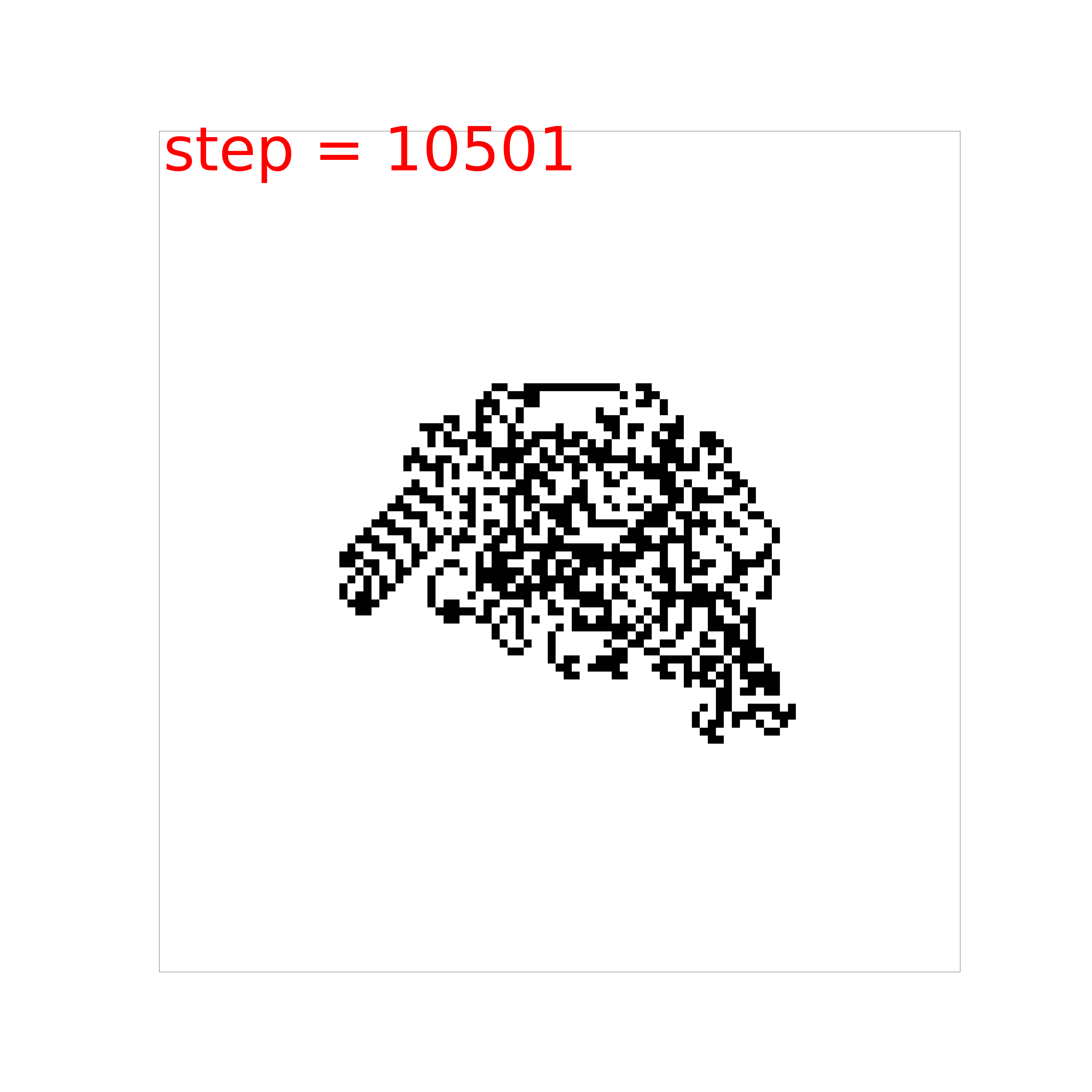1
2
3
4
5
6
7
8
9
10
11
12
13
14
15
16
17
18
19
20
21
22
23
24
25
26
27
28
29
30
31
32
33
34
35
36
37
38
39
40
41
42
43
44
45
46
47
48
49
50
51
52
53
54
55
56
57
58
59
60
61
62
63
64
65
66
67
68
69
70
71
72
73
74
75
76
77
78
79
80
81
82
83
84
85
86
87
88
89
90
91
92
93
94
95
96
97
98
99
100
101
102
103
104
105
106
107
108
109
110
|
import numpy as np
import matplotlib.pyplot as plt
from matplotlib import animation
import matplotlib.ticker as plticker
class Direction(object):
D = ['E', 'N', 'W', 'S']
def __init__(self, position, direct):
self.direct = direct
self.position = position
def go_one_step(self, left=True):
lr = 1 if left else -1
direct = self.D[(self.D.index(self.direct) + 1 * lr) % len(self.D)]
next_position = {
'E': lambda p: [p[0], p[1] + 1 * lr],
'N': lambda p: [p[0] - 1 * lr, p[1]],
'W': lambda p: [p[0], p[1] - 1 * lr],
'S': lambda p: [p[0] + 1 * lr, p[1]]
}
position = next_position[self.direct](self.position)
return Direction(position=position, direct=direct)
N = 100
lc, hc = 1, -1
fig, ax = plt.subplots(figsize=(50, 50))
data = np.zeros((N, N)) + lc
data[int(N/2), int(N/2)] *= -1
ax.get_yaxis().set_visible(False)
ax.get_xaxis().set_visible(False)
time_template = 'step = %d'
time_text = plt.text(0.5, N+0.1, '', fontdict={'size': 20, 'color': 'red'})
ln = plt.imshow(data, animated=True, cmap='gray')
dct = Direction(position=[int(N / 2), int(N / 2)], direct='N')
def init():
ax.set_xlim(0, N)
ax.set_ylim(0, N+5)
time_text.set_text('')
return ln, time_text
def move(dct, data):
'''
当前为白色方格,则对当前方格取反,左转前进一格;若当前为黑色方格,取反后右转前进一格
:param dct:
:param mat:
:return:
'''
pos = dct.position
if data[pos[0], pos[1]] > 0:
data[pos[0], pos[1]] *= -1
dct_ = dct.go_one_step(left=True)
else:
data[pos[0], pos[1]] *= -1
dct_ = dct.go_one_step(left=False)
return dct_, data
def update(f):
global dct
global data
dct, data = move(dct, data)
ln.set_data(data)
time_text.set_text(time_template % f)
return ln, time_text
def data_gen():
frame = 0
max_step = 11000
while frame < max_step:
frame += 1
yield frame
anim = animation.FuncAnimation(fig, update, frames=data_gen, interval=10,
init_func=init, blit=True, repeat=False)
anim.save('ant.gif', writer='imagemagick', fps=100)
plt.show()
|



